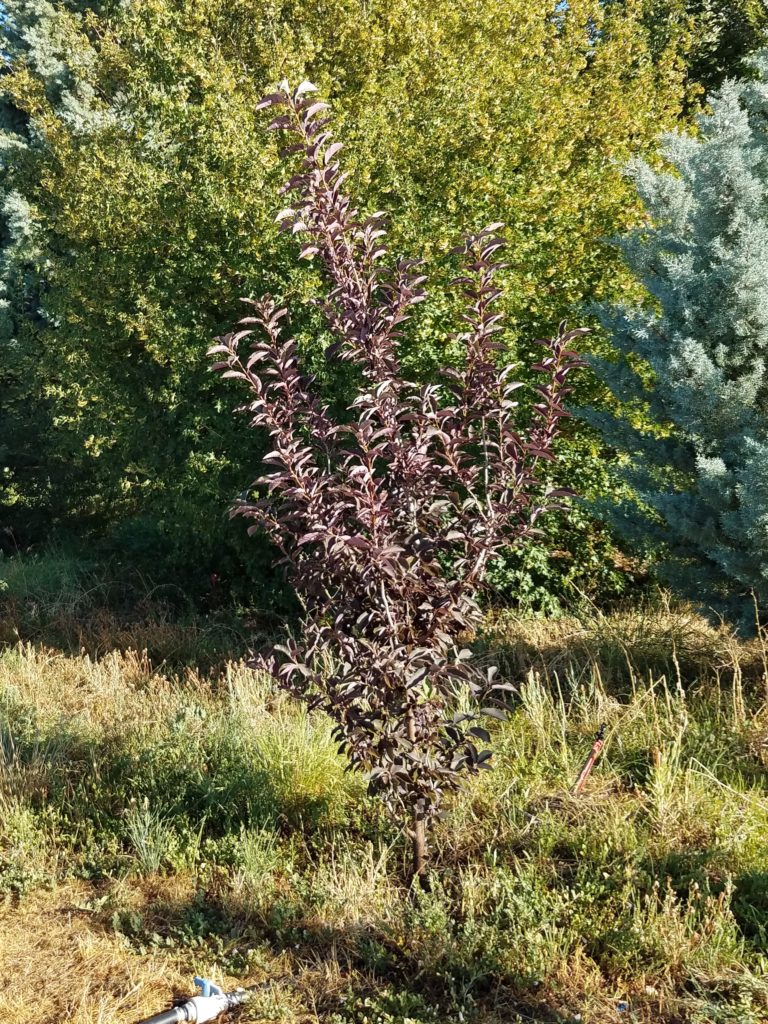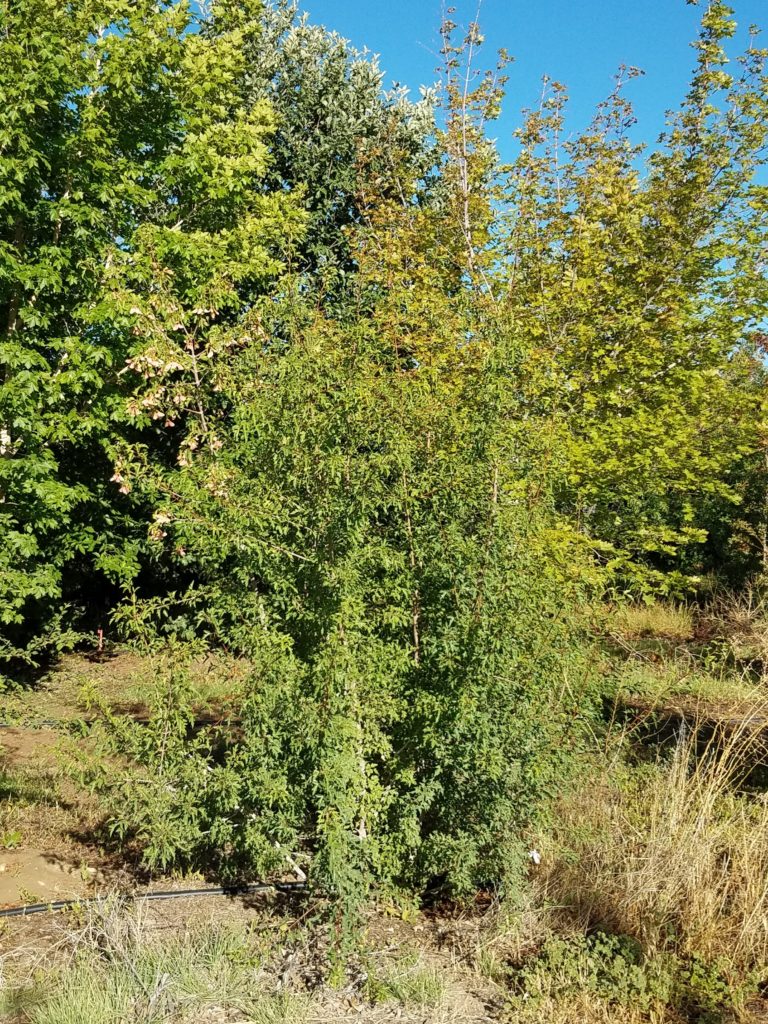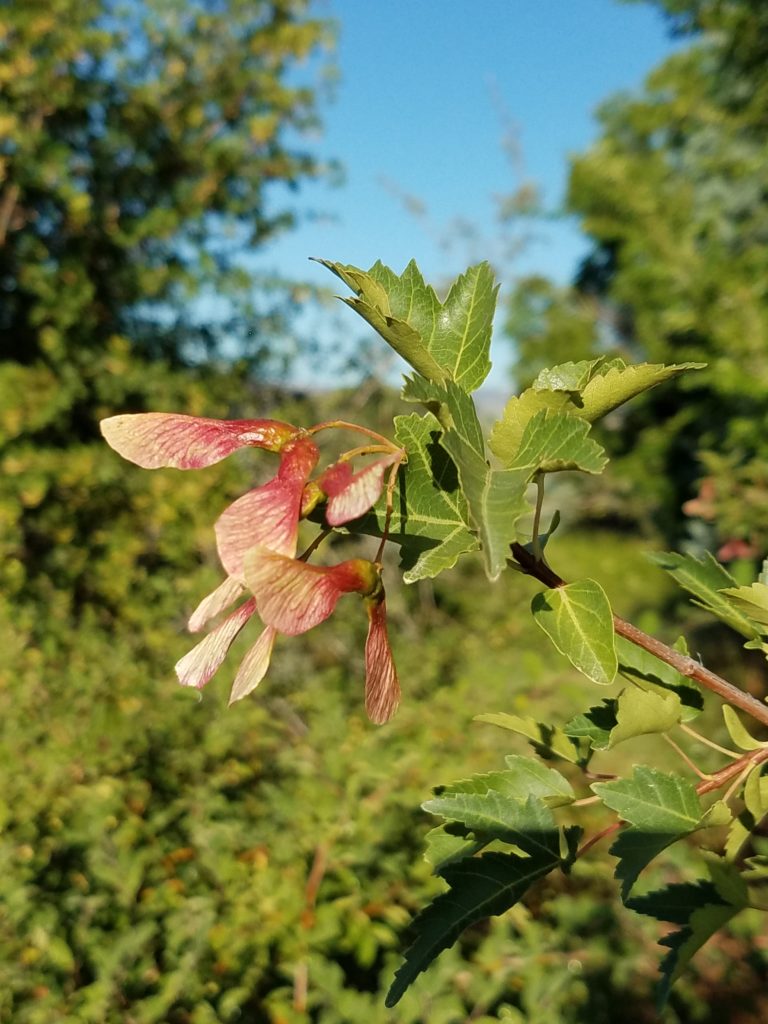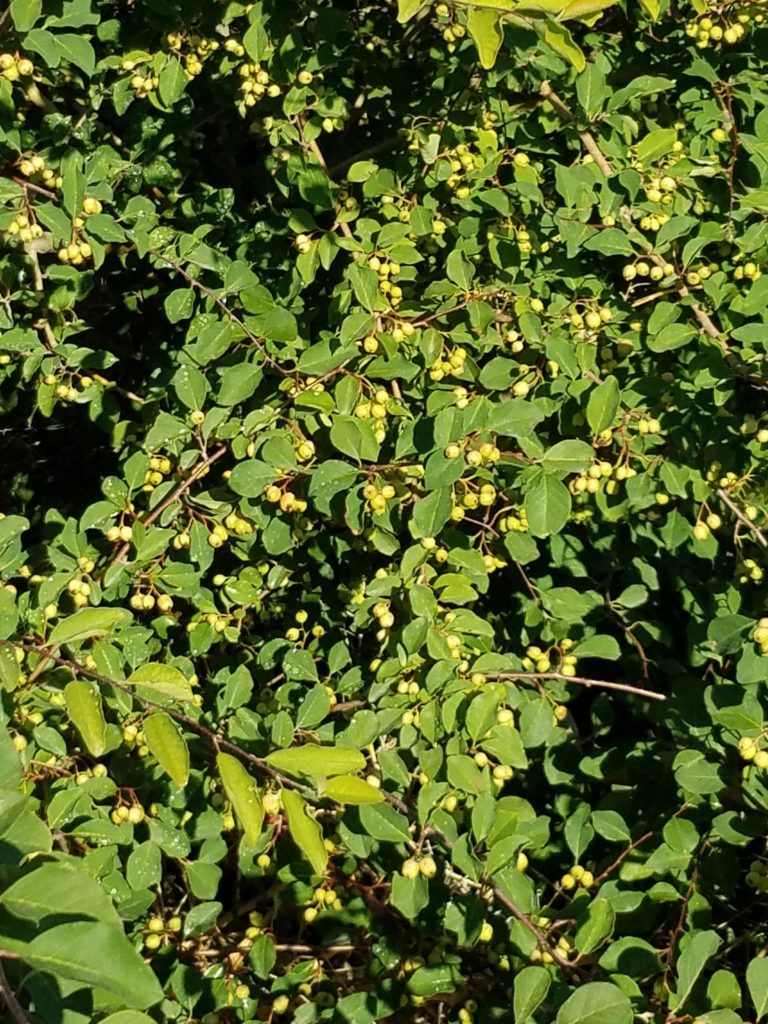
The multi-site woody plant evaluation project continues to gather data on woody plant performance in a manner that is both timely and respective of conditions in different regions of Colorado. The larger purpose of this study is enlarging the palette of woody plants available for use in Colorado landscapes and production in the state. Currently this study has four different sites located in Fort Collins, Brighton, Castle Rock, and Grand Junction. We test for adaptability and overall performance at each of these sites over a five-year period. In 2015, we planted five different woody plants and had eight replications at each site. I would like to comment on the successes and failures of these plants in various regions of the state.
Prunus ‘P002S’PP25,767 – Sucker Punch® Chokecherry
This woody plant was actually introduced in the Plant Select® program in 2019. It is an improved red leaf Chokecherry, which does not sucker. We have not observed any suckering at any of the sites. It has been a lot more vigorous in Brighton where it has been given additional irrigation, versus in drier Castle Rock and Grand Junction. It is apparently not as adaptable to the heat and drought found at the Grand Junction site. It gets reddish-purple foliage and white flowers in spring, followed by small, deep, purple fruits in late July.
Acer semenovii or Acer tataricum semenovii – Semen Tataricum Maple
This was grown as a multi-stem large shrub or small tree, and has survived at most sites. It has smaller leaves than Acer tataricum and has samara fruit that can be abundant, but not the vibrant red color observed on Hot Wings™ Tatarian maple. More vigorous growth was observed again in the more irrigated sites in Brighton and Grand Junction. In Castle Rock, which is not irrigated often, it was considerably smaller in size. However, we did not observe any chlorosis on the plant at any of the sites. Overall, in my opinion, it is not as ornamental as Acer tataricum ‘GarAnn’ – Hot Wings™ Tatarian maple, which was introduced by Plant Select® and is currently available.
Cotoneaster racemiflorus – Cotoneaster
This is a larger spreading cotoneaster that has been very adaptable at all four sites. It seems adaptable throughout Colorado, and would be suitable to plant in areas where a large spreading shrub is needed. It could possibly be utilized in large shrub borders or even in windbreak situations. It does have small pink to white flowers, followed with fruit that can be abundant and a good wildlife and bird food. We have not seen it self-seed in our test sites. Again, it is more vigorous in more irrigated sites, but adaptable to drier sites once established.
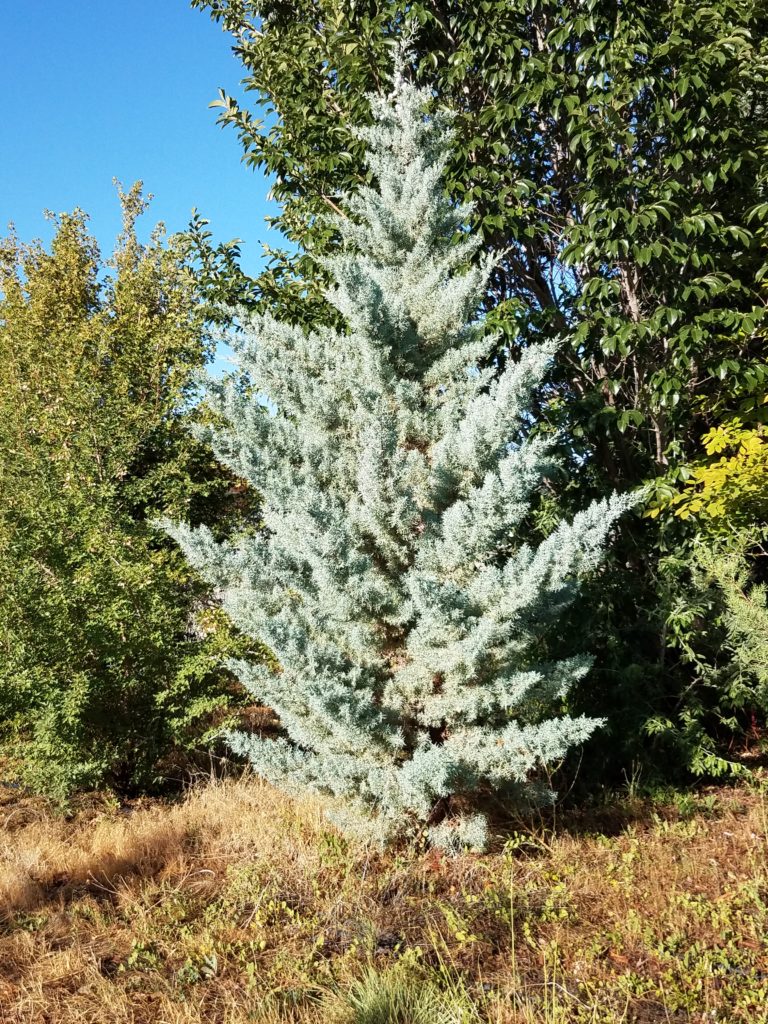
In this trial we also tested two Cupressus: Cupressus arizonica and Cupressus bakerii. We observed different adaptability at the different sites. Back in 2002, we planted Cupressus arizonica ‘Cooke Peak’, and it is still planted only in Grand Junction where it is thriving and has become large and very adaptable to that environment. The variety of Cupressus arizonica ‘Fandango’ we planted in 2015 was selected for really good blue foliage color. Again, this variety has been very adaptable at the Grand Junction site, with excellent foliage color and now setting some fruit. It was as adaptable in the more irrigated site in Brighton. In Fort Collins we had rodent and deer problems and very poor survival.
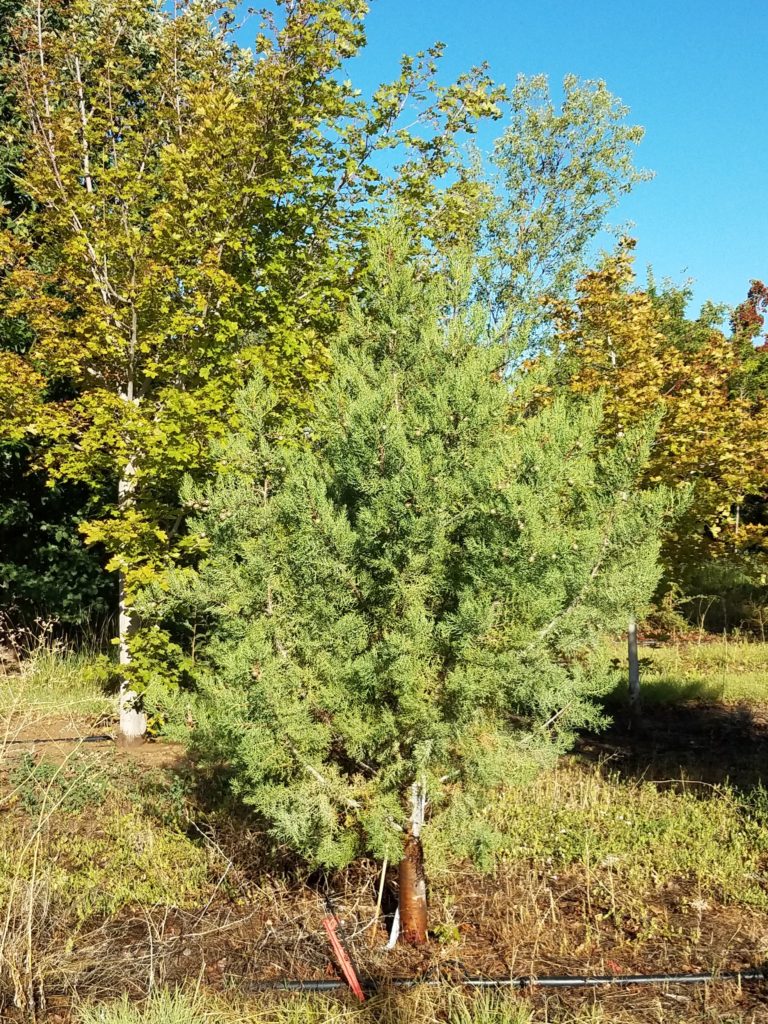
Concerning Cupressus bakerii, we had fairly good survival in Brighton but many developed into multi-stem plants. It had poor survival again in Fort Collins due to deer and rabbit concerns. In Grand Junction this species was smaller than Cupressus arizonica and had more of a green foliage color.
From this report you can see trial plants perform differently in different parts of Colorado, but some trial plants performed well at all sites. Therefore, information from these evaluation trials will eventually lead to more introductions to the Colorado plant palette but can vary with taxa in different climatic areas within Colorado.


